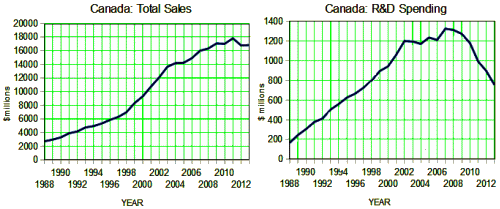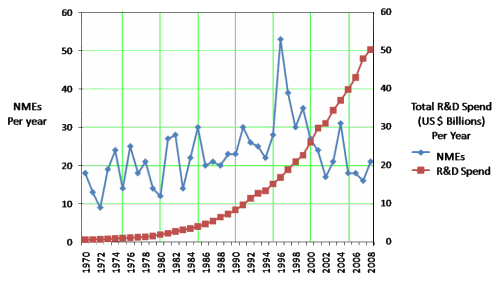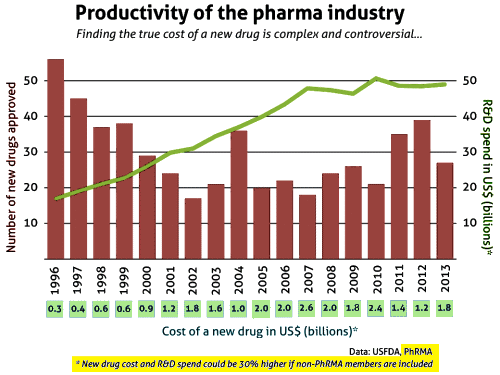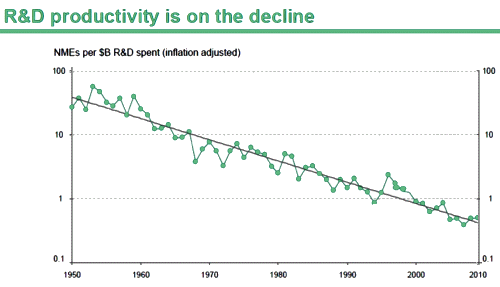Disclaimer: In early high school, my teacher returned a theme paper with a big red mark followed by red question marks. I had spelled the word business wrong. I’d put busyness. She thought I’d had a slip of the pen, but she was wrong. That’s how I thought it was spelled. One thing – it’s likely the first time I’d even written the word [age 16]. Another thing – my spelling wasn’t a Freudian slip either. It was an editorial. I grew up with an Italian Immigrant father who would’ve bartered with the Sun about what time it came up if it were possible – a businessman. I, on the other hand, found a path into my seventies without involving myself in business [busyness], even in private practice. It’s hard to do that [impossible if you don’t marry someone who enjoys that kind of thing – and still clips grocery coupons]. I say this because I’m about to talk about the pharmaceutical business [and busyness], and you need to know about my peculiar [apparently un·treatable] affliction to put what I say in context…
When I was in medical school in the 1960s, we were given engraved doctor bags with stethoscopes, tuning forks, and reflex hammers by Eli Lilly on the first day of school. The CIBA™ anatomy atlases with the amazing art by
F. Netter held an equal and sometime superior place on the shelf with Gray’s Anatomy. I probably never bought a ball point to take notes during my whole four years as a student, certainly not thereafter. Back then, the pharmaceutical companies sold the company brand, not the drugs, so I don’t recall even knowing the difference between brand and generic drugs until a little gray was showing in my hair. The only drug whose manufacturer I’m sure I knew in med school was the diet pill
Dexamyl® [
SmithKlineFrench™], because we haunted their rep tables for samples [for those teeth-clenching all-nighters back when such things were a badge of honor rather than drug abuse]. There was no drug advertisement except to physicians. In part because of my aversions to
business, I was mainly in charity hospitals or in the government service [State, VA, NIH, Military] until my mid forties, so I’m no resource for when things changed. I can only say that the change-over from
brand-promoters to
product-selling-machines was very real and quite dramatic, but I neither know exactly
when? nor for that matter, precisely
how? it happened:
This post from Ed Silverman Friday got me thinking about that in a little bit of a different way:
Pharmalot
Seventeen years ago, the government of Canada and the pharmaceutical industry struck a bargain. The country would extend patents for medicines and, in return, drug makers committed to spend 10% of their revenue on R&D in Canada. But it has not worked out that way and a public policy row has broken out over the extent to which the agreement may have denied Canadians speedier access to lower-cost generics. Why? Industry spending has fallen short of the mark every year for more than a decade. Last year, for instance, the amount of revenue dedicated to R&D activities in Canada was, collectively, 5.4% among drug makers with operations there, or $652 million, according to a recent report from the Patented Medicine Prices Review Board, a government agency.
The last time the pharmaceutical industry spent the agreed upon 10% of revenue on R&D work was in 2002. Since then, the amount of spending has declined each year. And when factoring in all drug makers, including those without operations in Canada, the portion of industry revenue spent last year on R&D was 4.5%. R&D spending was highest in 1997, when it reached 12.9% of revenue [see Table 16]….
 adapted from [Table 16]
adapted from [Table 16]
Note: These are raw figures uncorrected for inflation, but the shape is the same corrected or not.
My first reaction was predictable. Those [expletives deleted]! I got to wondering if the same thing happened in the US, having read so many articles about PHARMA closing R&D facilities all over the place, essentially eliminating R&D with CNS [psychiatric] drugs. I hit a snag. I found a ton of graphs through 2008 that looked like this one…
..but I couldn’t find one that came to the present and had both Total Sales and R&D Spending. I finally found this one, but the part highlighted gave me pause. Was it accurate? or a sales job?
Then I realized what all these graphs were about and why there were so many versions. They were meant to show that the big increases in spending had not payed off in N.M.E.s [New Molecular Entities]! They may not have been living up to their promises in Canada, and the spending in the US may have flattened out in spite of increased sales, but they were still spending a boatload of money, and coming up empty-handed. Then I found one that had all the bells and whistles – a long timeline antedating the Kefauver/Harris Act, a logarithmic scale to dampen short term fluctuations, and adequate correction for inflation. The story it tells couldn’t have been much clearer:
Maybe the rest of you already know what this means and it’s old hat. But it’s something that I haven’t really fully either understood or considered deeply. I’m going to just sleep on it [Disclaimer and all] before commenting further…




It’s not good news if you’re sick or getting old. Or if you love someone who is either sick or getting old. So that’s everyone.
Drug development will never be perfect. But there has to be a better way than the laborious and expensive and increasingly corrupt FDA odyssey. What we are doing now is not satisfying either the progress crowd nor the safety/efficacy crowd.
Pure speculation on my part, but I think some of it is due to the fact that real risk is not promoted in corporations and they’ve been playing it safe by developing me-too drugs.
Regardless, I am fairly certain one of the downstream effects of a lack of new agents is contributing to the incredible increase in the cost of many generics.
There has been some debate concerning the true cost of drug development. Pharma includes the NIH cost in their calculations along with an economic opportunity cost. This can vary widely and is a calculation they do with their numbers.
We also need to recognize the low hanging fruit has been picked. Brining a new drug to market does require more research and someone with a novel idea. Then the question becomes: do we need another treatment for a situation that already has a medication?
The drug industry has for many years relied on the glow of decades past when they were doing good and their incomes did good. Drug companies for many years were classified as a widows and orphans stock as the high cash flows allowed high dividends and a stable income for those in need.
Today I view the drug industry, and much of medicine, as marketing entities. Their whole purpose has become to sell and medicine is the chosen product due to high margins and the cash nature of the industry. The US and New Zealand are the only countries that allow DTC drug ads. We here have the highest drug cost of any country in the world because in addition to advertising our country does not negotiate drug prices at the national level.
Ethics has been replaced with a legal standard that prohibits people hurt from legal action due to high cost. The results are predictable in that class action suits have become the norm and those who have been harmed loose out to the attorneys involved.
I am left with the statement made by the sales manager of a drug wholesaler: sales people do not lie, they believe what they are saying at the time they say it.
Steve Lucas
This reflects a mature industry. The big pharma corporations are evolving from the growth model to the cash cow model. (Apple is currently doing this, too.) Although they may whine about being overregulated, this has more to do with corporate culture, management, financing, responsibility to stockholders, etc.
They are milking existing drugs for all they’re worth, and then some. Risk is assumed by smaller companies. If a promising drug discovery is made, a big pharma company will buy the smaller company.
If you want growth, you’ll have to look at the smaller biotech firms, such as Gilead.
I’m about to marry a Canadian who works for PHRMA as a chemist in the US. He’s a scientist and not a marketer, and he’ll tell you that the business people are focused on the easy targets and life cycle management. When he was looking for a job, there weren’t any in Canada. A lot of the Montreal facilities were shut down. English Canadians blame this on the French Separatists. I didn’t notice the drop in spending here, because all of the companies (until quite recently) were adding people in my region–even as they shut down sites in NJ.